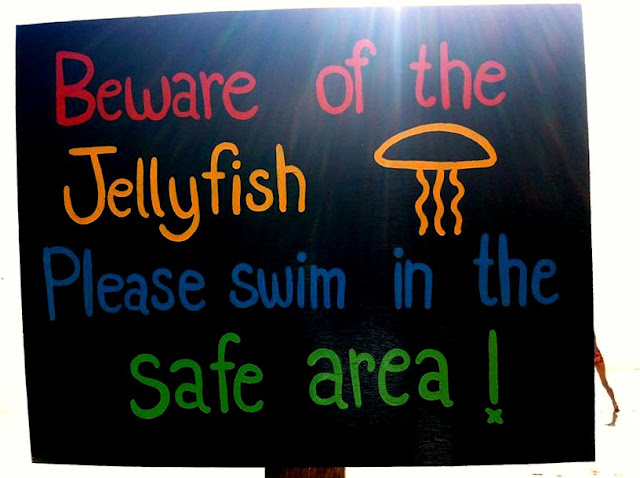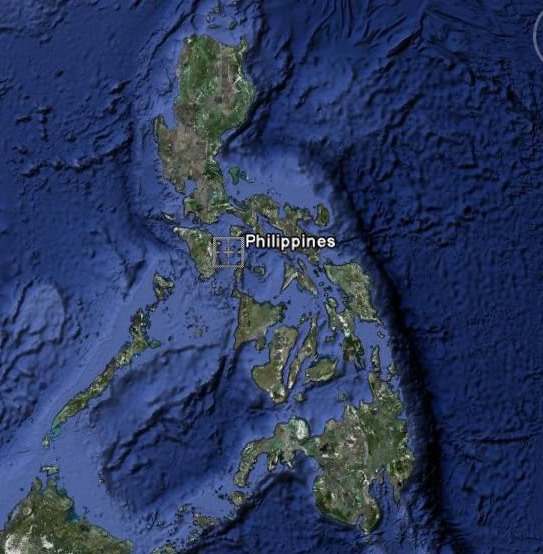Big Tick for Little Koh Mak
Koh Mak is taking the initiative in Thailand ahead of Koh Samui, Koh Lanta, Railay and other jellyfish hotspots to seriously consider the wellbeing of its guests and provide them with a form of protection that just may well save some lives in the busy Christmas/New Year holiday period.
The Ao Kao White Sand Beach Resort has rolled out a fishing net and adapted it to protect a large swimming space from jellyfish. The net appears solid and provides the resort's guests and visitors with a sizeable area within which to enjoy the water. This is perfect particularly for children and will hopefully provide a good level of protection from stinging jellyfish including lethal box jellyfish that are known to live in these waters.
It is very important to acknowledge the value of such an initiative and pat the good people of Koh Mak on the back for doing such a terrific job in providing serious care for the visitors that love relaxing on its beaches and propping up its growing economy. Further serious stings on this island could potentially harm its development so being proactive is essential and Koh Mak has not been afraid to highlight the issue and demonstrate that it is prepared to change and improve to protect its guests and its reputation.
However, this is just the beginning, just the start! Jellyfish prevention nets operate in Australia and are specially engineered, designed, manufactured, operated and maintained to prevent jellyfish from entering during all weather conditions and all tide positions. These are 'smart' nets. Fishing nets will provide an element of good protection but it is difficult to see how big or deep this Koh Mak net extends. Box Jellyfish as explained in a previous blog can swim and see and can move around or under obstacles such as fishing nets. So while this net may prevent 'floating' jellyfish from entering it may not stop lethal Box Jellyfish.
Visitors to Koh Mak need to be reminded that this net at Ao Kao will provide them with some protection but for absolute safety and peace of mind the ONLY proven way of not being stung is to wear a full length lycra swimming suit.
Tourism and hospitality operators on Koh Mak need to be reminded that this net is a great start that must be improved upon if effective protection is to be offered. Vinegar must be made available on the beach - a good, obvious position is near the net so that it can be quickly accessed in case of an emergency. These photographs below show clearly just what works in Australia and what would work equally well in Thailand. Vinegar should be splashed on a sting for at least 30 seconds to 'kill' the stings and stop the flow of venom into the body. It is the venom that will kill a human in minutes - vinegar MUST be applied IMMEDIATELY!
Proper, permanent, effective signs need to be put up on the beaches. These signs should not be 'scary' and not made to turn people off from entering the water. The signs need to be to the point but can be subtle and a good idea might be to organise a competition on the island or beach among the local community and visitors (particularly the kids) to come up with a clever design. Take ownership of the issue, as Koh Mak is doing, and take it to the position it needs to go so that everyone is provided with the best prevention possible. Ao Kao's sign above is done in fun colours and provides a good focal point for kids - they are certainly on the right track!
This sign at Koh Lanta is not in a good position to be seen by everyone and the image and words used on the sign do not fully convey the right message - BUT a sign is a sign and this is better than nothing!
The team at Koh Mak's Ao Kao beach need to be congratulated for being proactive and wanting to take control of this problem to ensure their guests' safety. Resorts, hotels, beaches, communities, tourism operators plus the tourist and hospitality industry authorities and government officials need to follow the lead made by little Koh Mak and make a big decision themselves to provide the best possible protection for all water users.
Box jellyfish numbers and that of other stinging jellyfish are only going to increase, tourist numbers will increase, action needs to be taken now to avoid any future tragedies. Koh Mak is listening, they are paying attention to their guests' concerns and their own conscience, and they are acting - well done Koh Mak!
Tourists will certainly feel more safe and relaxed at Ao Kao beach on Koh Mak - as they should on every tourist beach around Thailand!
Pics courtesy of Koh Mak Facebook site 2011.











Comments
Post a Comment